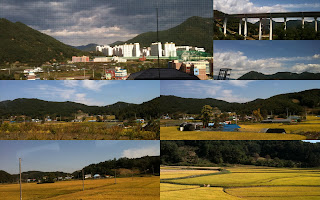
Tokyo — Internet of Things (IoT 2010), a three-day public conference, gathers leading researchers from academia and industry to elaborate on the major themes of the emerging Internet of Things. On November 29, 2010 focused workshops and tutorials feature in a pre-conference program. On the two following days, researchers and industrial practitioners meet and present talks and keynotes in front of an expected audience of 300 visitors. Today, connectivity and increased bandwidth of the Internet have borne a huge number of services such as email, e-commerce, e-banking, VoiP – many of those have become a commodity. However, the World-Wide Web today still only represents a fraction of information about our real-world. To foster the automatic integration of a larger fraction of the 100 trillions of physical items crafted by 6.5 billion people per year into today’s Internet, the infrastructure of the IoT will have to be heterogeneous: besides the 2 billion computers and 4 billion mobile phones additional objects will connect, some of which will have their own Internet Protocol addresses, others may even run web-services (sometimes to referred to as ‘Web of Things’), use sensors to perceive their environment (e.g. food logging its temperature along the supply-chain) and use actuators to interact with it (e.g. chemical explosives warning staff from close collocation). “In the recent years, we have gained a rough understanding of what the Internet of Things really is and how likely unfolds in nature", says Elgar Fleisch, professor at ETH Zurich and the University of St. Gallen, co-chair of the Auto-ID Labs, and co-chair of IoT 2008 and IoT2010. "However, we still lack some of the essential global standards and infrastructures that would drive adoption on a broader scale". The goal of IoT 2010 is to gather the stakeholders in order to continue work on technical requirements and business needs to build the Internet of Things. Thanks to the recent advances of miniaturization and the plunge of costs in RFID devices, sensor networks, NFC and wireless communications, the technologies and applications around the concept of the IoT became increasingly relevant for industry and end users. Detection of the status of physical things through sensors, collection and processing of item-level data allow us to respond to real-world changes instantly. This fully interactive and responsive network yields immense potential for consumers and businesses. "The existing Internet is just an infrastructure for the Internet of Things”, says Jun Murai, professor at Keio University, chairman of the board of directors of the Auto-ID Labs, and conference chair of IoT 2010.“The Internet of Things is the key to solving many real-world problems. That is why we decided the conference theme to be IoT for a Green Planet at this time.”. Clearly with the close interlinking of physical objects and cyberspace also privacy and security have to be answered properly. “There will be areas where user acceptance is essential: The possibility to locate and trace objects is certainly much welcome if you have lost your keys, but it will not be accepted if the government uses it to snoop on its citizens”, says Friedemann Mattern, professor at ETH Zurich and co-chair of IoT 2008. Keynote speakers, researchers and industry experts will discuss the immense potential for consumers and industry, how items can be integrated with the internet to sense, check, and act to fulfill known and latent consumer and business needs. Practitioners will report on latest real-world implementations, applications, and experiences. In addition to the main conference on November 30 and December 1, a pre-conference program on November 29 will feature several workshops focusing on dedicated topics such as standards, prototyping, social and organizational aspects, and specific applications of the IoT for interconnected and interoperable vehicles. Furthermore, there will be tutorials putting across fundamentals on today’s core technologies of the IoTsuch as sensor networks, RFID and corresponding software frameworks. For more information on the Internet of Things Conference 2010 visit www.iot2010.org or contact iot2010@ethz.ch.
The 1st International Conference on Internet of Things 2008 in Zurich discussed the fundamental challenges of interconnected objects forming an Internet of Things (IoT); from consumables to assets, from food to high-value items. The Internet of Things Conference 2010 (www.iot2010.org) will explore the technical requirements and business challenges to address today’s societal challenges with IoT technology: health monitoring systems to support the aging society, distributed awareness to help predict natural disasters and react more appropriately, track & trace to help reduce traffic congestion, product lifetime information to improve recyclability, transparency of transportation to reduce carbon footprint, and more insights into various kinds of processes to improve optimization. This conference will continue the success of the International Internet of Things Conference 2008 in Zurich and will put a dedicated focus on the IoT infrastructure and applications, facilitating environmental responsibility, an "IoT for a Green Planet".


 I was invited to give two talks one on the status of European
I was invited to give two talks one on the status of European 


